
The book sketches the shape of the Capital in memory and its changes, and also invites readers to participate in the quiet dialogue between the past and the present, between those who have gone far away and the city that remains forever in their hearts. Without writing about the great changes, author Nguyen Xuan Hai leisurely and quietly collects "disjointed pieces" to create a separate space of memories, flavors and especially the soul of "Hanoi people".
“Hanoi in me” has a simple yet profound writing style, both culturally researched and containing the whispering voice of a person who chooses to return to the old streets, old shops, old streets and the flavors of the four seasons, creating a Hanoi that is both concrete and vaguely nostalgic. The work also contains thoughts on identity, memory and urban identity.
“Hanoi in me” has a simple yet profound writing style, both culturally researched and containing the whispering voice of a person who chooses to return to the old streets, old shops, old streets and the flavors of the four seasons, creating a Hanoi that is both concrete and vaguely nostalgic. The work also contains thoughts on identity, memory and urban identity.
Author Nguyen Xuan Hai has a PhD in Economics from Johns Hopkins University and a Master of Mathematics from the University of Tennessee. With that information, many people can imagine him as more attached to numbers, reason and science. But with “Hanoi in Me”, readers meet another person, with a sensitive, profound soul, imbued with the appearance of a poet who knows how to enjoy and calm every breath of life. It is this parallel between reason and emotion that makes his prose have a special beauty, both refined and delicate in observation, profound in contemplation and soft in the flow of memory.
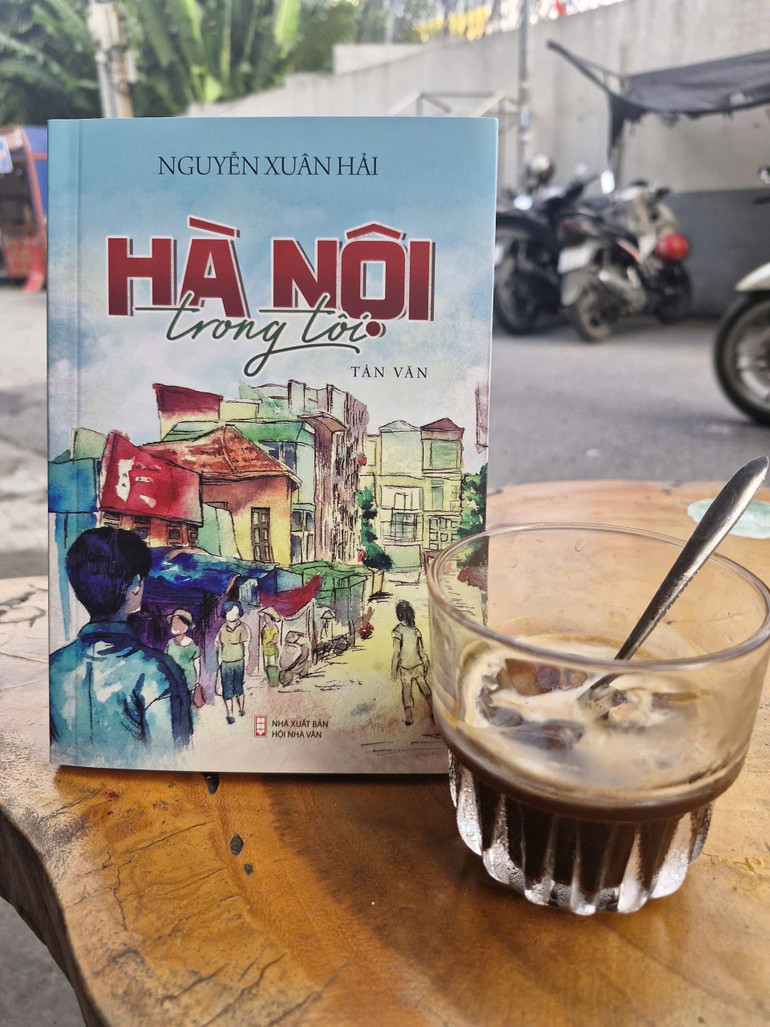
The book is constructed as a multi-tone epic, opening up different levels and spatial dimensions of human memory.
The 6-part structure from “24-hour Hanoi Memories” to “Contemplation and Reflection” is a mental journey from emotions to experiences and reflections. That operation creates depth of thought and emotion, helping the book completely surpass the boundaries of a collection of personal notes to become a symbol of the journey back to the self in the space of Hanoi.
The opening section of “Memories of Hanoi” conveys the complete pulse of the city within 24 hours, from morning, day, evening to the city’s dream. The cyclical time structure makes the reader feel like they are living, breathing, walking, and dreaming with the city. The essays “Letter to Sister”, “Goodbye Hanoi”, “Love”, “Wandering in the Beginning of Winter”, “Hoa Khanh Linh”… continue with a flow of private emotions, portraying Hanoi as a soulmate.
The author does not observe from the outside, but enters the flow of time so that every detail of everyday life: the cry, the scent of flowers, the first rain of winter... becomes an important part of consciousness. If we call part I "life time", then this is also the central emotional axis that governs the entire book.
From the rhythm of life to space, part II is like a mental map with pieces: "Hanoi winter", "Hanoi and I", "Random stories of Hanoi", "West Lake that year seemed greener", "Cicadas chirping - summer returns"... forming a series of memories following the steps of season, place, and emotion.
It is noteworthy that the structure is not arranged linearly. Each “street corner” is not connected geographically but depends on the flow of mood as if Hanoi were reconstructed in the writer’s subconscious. “Talking to Hanoi”, “Oh Hanoi…” are two highlights showing that Hanoi has not really become a subject of dialogue, knowing how to listen, empathize, respond… with the writer’s subtlety and sensitivity.
After space comes taste. The author seems to understand that to reach the soul of Hanoi, one must go through the warm and simple “restaurants”. The essays “Night Eating”, “Water Store Stories”, “Music Paintings Still the Same as Before!”, “Going to Eat Pho”… leisurely tell culinary stories to awaken the cultural layer of memories.
Cuisine in the author's perspective and feelings is not described by material satiety, but through a sense of nostalgia: the taste associated with a face, an afternoon or a piece of old music. By the structure of transferring feelings, from sight to taste and then to memory, this part helps the entire collection of essays become more vivid and warmer.
Part IV “Fragments of Life and Emotions” can be imagined as an open space from “I” to “we”. The structure of the book therefore radiates from the individual to the community. The essays: “Home! Sweet home!”, “Address to Hue”, “Song for a stormy night…”, “Vodka”, “Afternoon rain, crowded streets…” all blend inner sounds with contemplation of the world.
Hanoi in this part is no longer a specific place, but becomes a common emotional backdrop, a space where meetings, separations, passions and regrets take place. The author shows his mature writing ability when he knows how to step back to observe and contemplate. The structural shift from the "private" (Hanoi) to the "public" (lives) is a humanistic highlight of the entire book.
Part V, entitled “Diary across Vietnam”, is like a side story. The author placing this part after having built a complete portrait of Hanoi is a very subtle and intelligent structural choice: when leaving Hanoi, the writer can most deeply understand Hanoi. Pieces such as: “Right after Hanoi at this hour, is it raining, my dear?”, “Cao Bang - Bac Kan - Hanoi”, “Sai Do Ky”… open up the geographical journey and at the same time temporarily close the mental journey. Hanoi becomes a “memory benchmark” and also the base for comparison, nostalgia, and return.
The 6-part structure is concluded with contemplative essays: “Chicken Teeth”, “Old Confessions”, “Writing for the 20s”, “After Journey to the West: Stories Just Told Now”… If the first part is about emotions, the last part is about thoughts. The author no longer writes about Hanoi specifically but seems to have sketched his own portrait, throughout the process of living, loving and leaving Hanoi. The calm tone, mixed with a bit of self-mockery, makes this ending become poignant and profound.
Even though it stretches across many lands, from Lang Son, Cao Bang, Saigon… to even distant lands, “Hanoi in me” still does not leave the orbit of the central city in my mind.
Other place names appear not necessarily to expand the travelogue space, but actually contribute to repositioning Hanoi in the inner depths. Writing about any place, the writer always illuminates the strange landscape with the light of Hanoi's memories, even in trips across Vietnam, Hanoi is still the dominant emotional axis, the "root road" to which all other roads lead.
In the symbolic meaning, the appearance of many different place names is the author's way of creating a psychological map of the expatriate, where physical space is just an excuse to reveal the space of memory. This technique makes the structure of the essay unique: the further away you go, the clearer Hanoi becomes; the more lands you pass through, the deeper the image of Hanoi becomes in your subconscious.
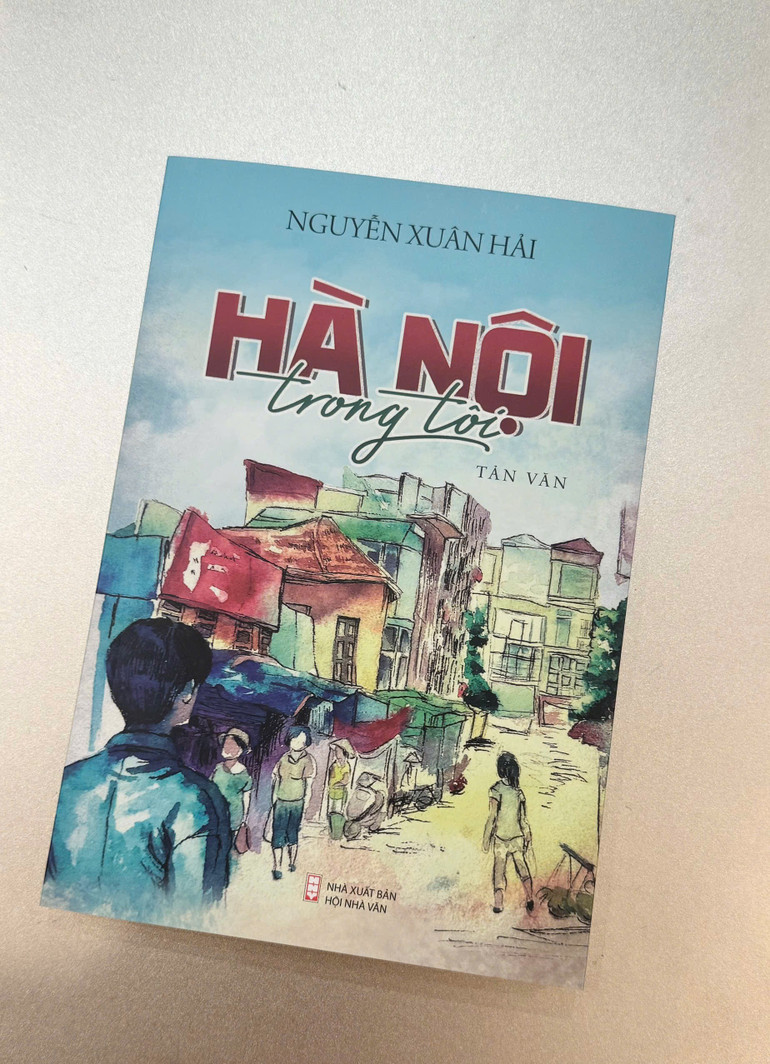
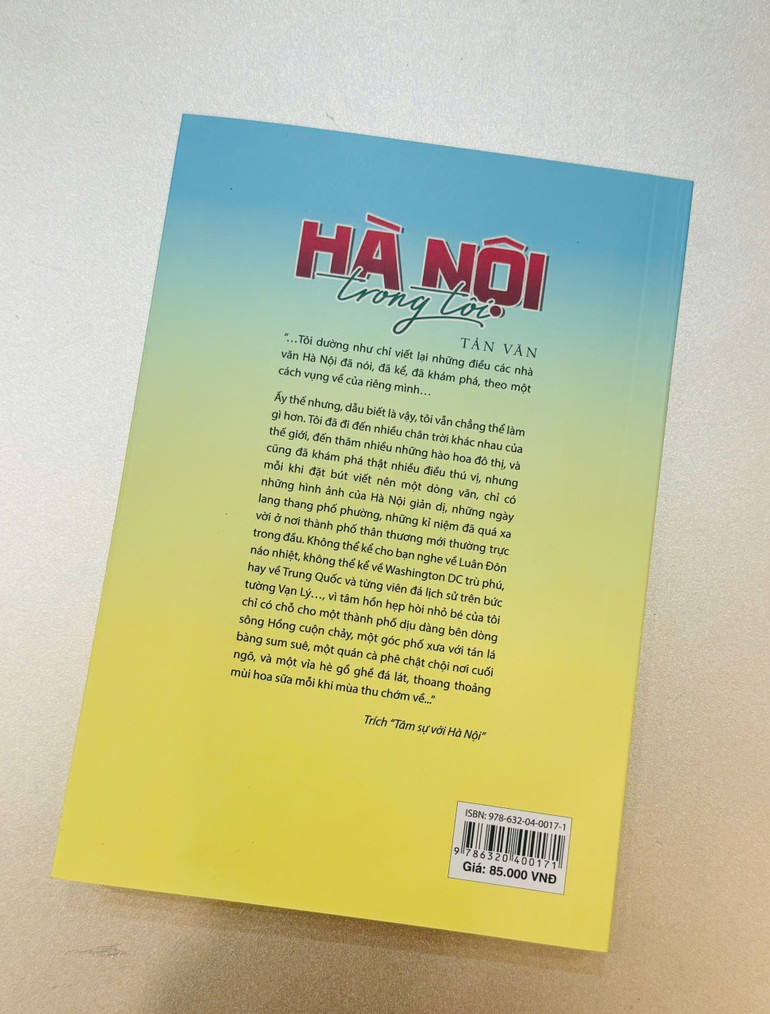
Thus, Hanoi in the book is the “spiritual axis” where all journeys converge; each trip is a test for nostalgia; each new land is a mirror reflecting the ego... Writing about those places, the author does not describe, but dialogues with Hanoi in his heart.
The elaborate book does not follow a rigid structure, but each part can be read independently, yet still resonates with emotions and thoughts. Hanoi appears not only as a geographical space but as a living organism, moving with time, people, flavors, memories and philosophy of life.
For that reason, the collection of essays is like a map of the soul, helping the writer to dialogue with the past, with the city, and with himself. The six-part structure - from "feeling" to "realization" - has created a complete journey.
The structure also shows that Nguyen Xuan Hai does not write spontaneously but has an aesthetic awareness of the movement of emotions. From the trivial details, he builds a whole with a long resonance, connecting “material Hanoi” and “spiritual Hanoi”.
“I seem to be just rewriting what Hanoi writers have said, told, and discovered, in my own clumsy way…” - The author’s words carry a humble, self-conscious tone. That is “artistic modesty” which is actually also the writer’s manifesto.
Nguyen Xuan Hai knows that Hanoi has been written about too much, from Thach Lam, Bang Son, Nguyen Viet Ha to Nguyen Ngoc Tien... But it is in his self-proclaimed "clumsiness" that readers can feel the unique qualities of a person who is far away, trying to hold on to the most fragile things like scents, sounds, feelings...
Nguyen Xuan Hai no longer “describes” Hanoi, he dialogues. That is the point that makes his literature stand between two worlds: literature of memory and literature of self-awareness.
“I can’t tell you about bustling London, I can’t tell you about prosperous Washington DC... because my small, narrow soul only has room for a gentle city by the flowing Red River, a cramped coffee shop at the end of an alley, and a rough, stone-paved sidewalk, faintly scented with milk flowers when autumn begins...”. This is one of the most notable passages of the book, both a “confession” and a “declaration of feelings”.
The author does not hide his “narrow soul”, but turns it into value. That is the “narrowness” of loyalty to memory, the “narrowness” of one-and-only love. The images in this paragraph are organized in a structure of fleeting co-existence like distant, blurred external scenes, to create a background for “Hanoi - Red River - coffee shop at the end of the alley - milk flower sidewalk” to rise with intense sensuality.
The further away from the world, the closer Hanoi is; the more you travel, the more love becomes "localized" in a very close and sacred way.
The structure contributes to the effect of emotional contrast: the further away from the world, the closer Hanoi is; the more you travel, the more love becomes "localized" in a very intimate and sacred way.
“Hanoi people eat not only because of the delicious food, but also because of the surrounding scenery, and because of the familiarity, even though it is something too old and too outdated. Eat to remember, to reminisce, to reminisce, my dear...”. That is one of the passages that clearly demonstrates Nguyen Xuan Hai’s cultural ability.
Cuisine in his essays is not considered as a subject but as a form of collective memory. “Eat to remember, to reminisce” contains the philosophy of urban culture: food, in addition to taste, is also a ritual of memory and belief.
In the collection of essays, the tone often shifts from narrative to dialogue, creating a sense of intimacy and privacy, like whispers during a date at an old cafe or on a familiar street.
At a deeper level, we see a Hanoi that is being faded by time and each dish becomes a “living proof” of the past. This is where Nguyen Xuan Hai’s writing touches on the “sense of loss” - a core theme of contemporary urban literature. Here, Nguyen Xuan Hai does not seek to restore the old Hanoi but is very aware of the change. The writer “sits between that line”, which is the position of a modern subject who is both nostalgic and accepting of reality. In that sense, the author is both a keeper and a witness to the passing away.
In the book, the pages about winter create a special impression. On a symbolic level, “winter” in Nguyen Xuan Hai’s writing is a condensed moment of memory, when all sounds, dialogue, and movements of life recede so that people can hear their inner voice.
The inner narrative becomes the element that makes his writing close to poetry and has a meditative tendency. The author seems to have rejected all intentions of “grand narrative”, he does not want to create a complete portrait of Hanoi but only modestly “collects scattered pieces”. This writing style evokes the “fragment aesthetics” in modern literature, expressing the truth not in the whole picture but in each emotional fragment.
“Hanoi in Me” is a work that blends memory and knowledge, culture and narrative, representing the trend of contemporary urban prose.
“Hanoi in Me” is a work that blends memory and knowledge, culture and narrative, representing the trend of contemporary urban prose. Nguyen Xuan Hai writes as if to preserve the human warmth in a changing city.
In his world, cuisine, winter, small shops or streets… are all symbols of identity and love. The book is written with a love that is as enduring as a winter fire. With a delicate, restrained but haunting voice, the author makes readers believe that, wherever they go, each person carries their own Hanoi with them.
The author confided: “I do not try to generalize or define Hanoi… I gather those scattered pieces to make a small picture”. It is in that smallness and awkwardness that lies a truly great Hanoi of memories and humanity.
Reading a book is like hearing the bells of St. Joseph's Church ringing in the mist, the scent of milk flowers in someone's hair, and suddenly feeling warm inside, as if Hanoi is softly whispering: Come back, there is still a city here not far away...
Source: https://nhandan.vn/buc-tranh-hoai-niem-va-doi-thoai-trong-tap-tan-van-ha-noi-trong-toi-post914270.html


![[Photo] Opening of the World Cultural Festival in Hanoi](https://vphoto.vietnam.vn/thumb/1200x675/vietnam/resource/IMAGE/2025/10/10/1760113426728_ndo_br_lehoi-khaimac-jpg.webp)



![[Photo] Ho Chi Minh City is brilliant with flags and flowers on the eve of the 1st Party Congress, term 2025-2030](https://vphoto.vietnam.vn/thumb/1200x675/vietnam/resource/IMAGE/2025/10/10/1760102923219_ndo_br_thiet-ke-chua-co-ten-43-png.webp)
![[Photo] Unique Phu Gia horse hat weaving craft](https://vphoto.vietnam.vn/thumb/1200x675/vietnam/resource/IMAGE/2025/10/10/1760084018320_ndo_br_01-jpg.webp)






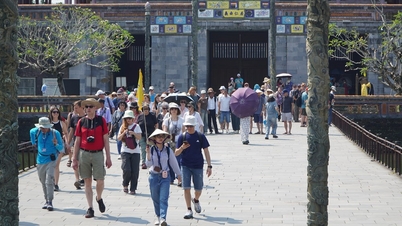











![[Photo] Opening of the World Cultural Festival in Hanoi](https://vphoto.vietnam.vn/thumb/402x226/vietnam/resource/IMAGE/2025/10/10/1760113426728_ndo_br_lehoi-khaimac-jpg.webp)
















































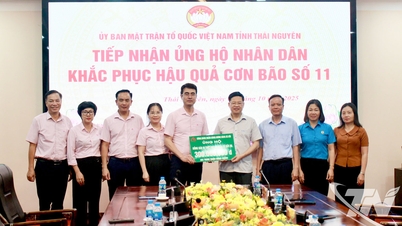





















Comment (0)